
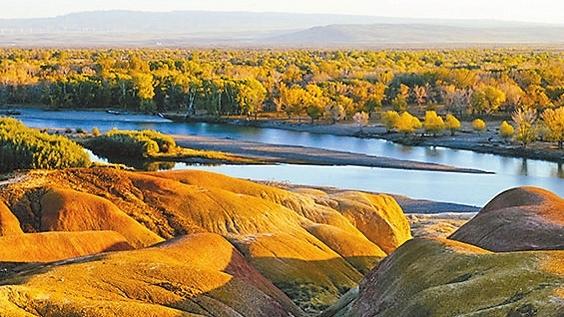
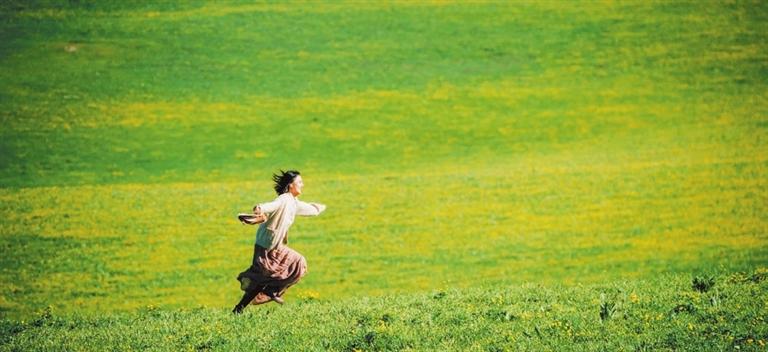
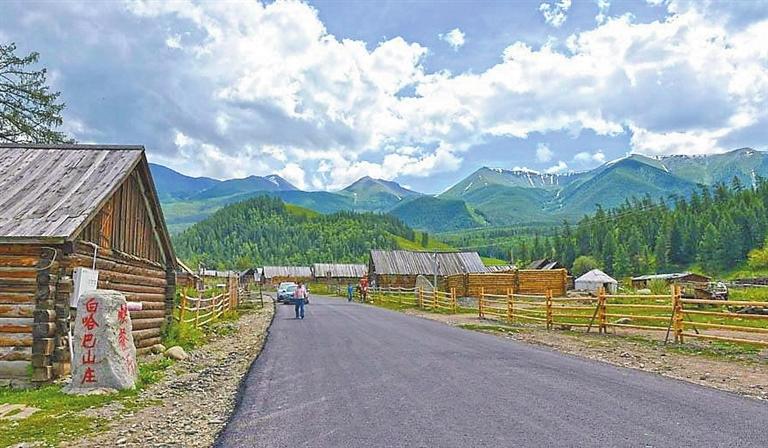
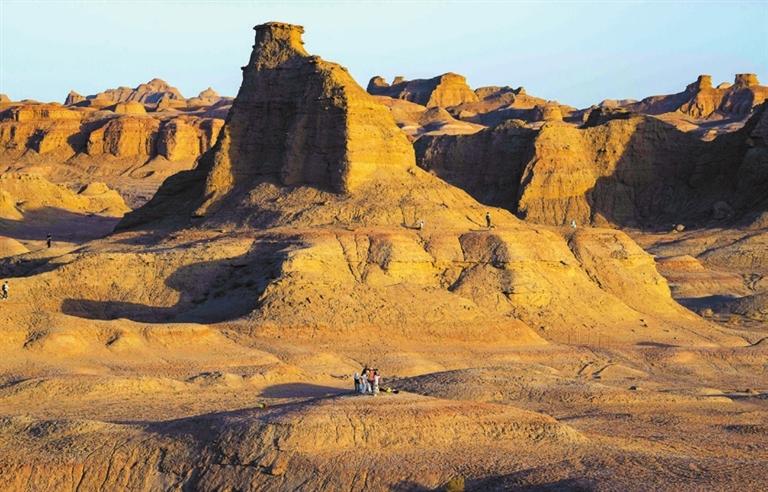
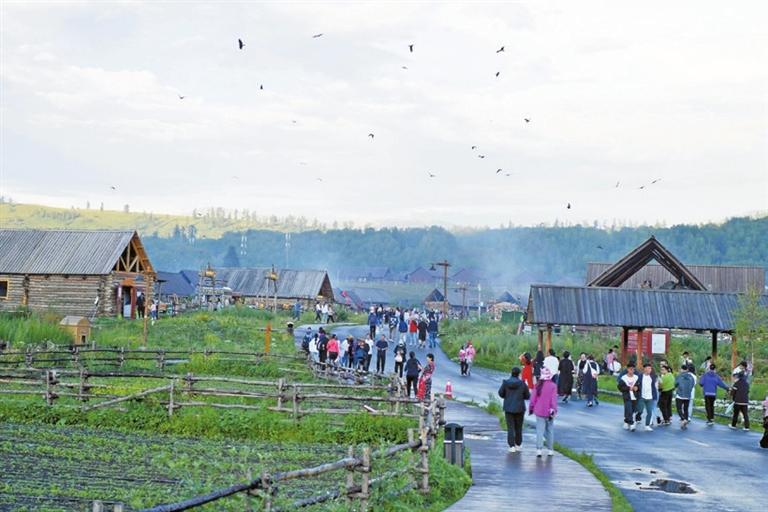
BASED on an award-winning essay collection by woman writer Li Juan and set in China’s remote northwest, the miniseries “To the Wonder” has become an instant smash hit. The eight-episode drama sparked heated discussions on social media and wanderlust among young urbanites since its May 7 debut. Last month, the series also became the first Chinese drama to be included in the official selection for the Canneseries festival. The Altay Prefecture — where stories of the original book unroll before the reader’s eyes and the series was shot — has caught the imaginations of young Chinese yearning to escape the grind of city life. Tucked in the northern parts of the extensive Junggar Basin in Xinjiang, Altay, consisting of Altay City as well as Burqin, Habahe, Jimunai, Fuhai, Fuyun, and Qinghe counties, offers breathtaking natural landscapes and unique cultural experiences. A large ethnic Kazakh population inhabits this region, with some keeping their traditional nomadic lifestyle. Here we take our readers to some of the must-visit destinations in this wonderland. Karamay Ghost City Nestled in the heart of the Urhe District, a mere 45-minute drive north of Karamay, lies the enigmatic Karamay Ghost City. Echoing its name, the haunting melodies of winds weaving through the ancient rock formations have sculpted this place into a mesmerizing tapestry of time and nature. Over millennia, the relentless caress of wind and water has chiseled the Ghost City’s elevated strata into majestic mounds, each standing tall at an average height of 10 meters. Here, nature’s artistry unveils a marvel of shapes — some reminiscent of fortresses, temples, and watchtowers, while others mirroring creatures of myth and reality like lions, horses, and eagles. Meandering through this ethereal landscape, one sees nature’s homage to iconic edifices, a reason why many films, including the Oscar-winning “Crouching Tiger, Hidden Dragon,” have found their backdrop here. Keketuohai National Park Explore further into Altay, one will come to experience the rugged grandeur of Keketuohai National Park, hailed as the “Chinese Yosemite,” a sanctuary spanning 777 square kilometers just 56 kilometers from the Fuyun County seat. Featuring beautiful natural scenery such as valleys, rivers, peaks, forests and mines, the park was listed as a UNESCO World Geopark in 2017. It comprises of four main scenic areas: Irtysh Grand Canyon, Ilavmu Lake, Cocoa Sullivan Lake, and Fuyun Quake Relics. The 1931 Fuyun Earthquake led to a 176-km earthquake rupture belt centered on Kalaxianger. The quake left its striking mark in the form of a grand collapse which is 9 kilometers long and 5 kilometers wide — a seismic museum frozen in time. Hemu Village Jiadengyu, located to the southeast of Kanas Lake, is the entrance to the Kanas scenic area and the most convenient tourist center in the area. Food and accommodation are much cheaper here than in the scenic area. Setting off from Jiadengyu, traveling through a birch forest, and marching along the crystal Kanas River, you’ll arrive at Hemu Village, the largest of three Tuvan villages with the best tourist facilities. Many residents have transformed their houses into B&Bs that feature rustic charm and idyllic peace. In the early morning, the whole village is hidden in mist, conjuring up a magical view that generally lasts for about an hour. It’s recommended to rise early and go to the Dianjiang sightseeing platform half an hour before sunrise for a glimpse of this breathtaking moment. Kanas Lake Among the three bays of Kanas, Fairy Bay is the closest to the old village of Kanas. In the early morning, the bay is shrouded in thick mist. When the sun rises and casts its light upon the snow peak over the lake, the mist becomes a divider that separates the mountain above and the lake below into two distinct worlds. To enjoy better views of Kanas Lake, you may take a shuttle bus to the Guanyu sightseeing platform located on the peak of Kanas. From the platform, you can enjoy a panoramic view of the blue lake, the forests, and the nearby villages. Taking a stroll along a plank road around the lake is also a good choice if you prefer to have a closer look. Baihaba Village Baihaba Village is located near the border of China and Kazakhstan. Tourists need a border areas travel permit to visit the village. Like Hemu Village, Baihaba is also a Tuvan village, but with more rustic vibes. Sitting in front of a log cabin and watching shepherds, soldiers, and young men playing the morin khuur as they pass by can provide you with a sense of serenity. Wucaitan Wucaitan, or the Five-Colored Hills, is worth a visit too, although it’s normally dwarfed by Kanas Lake, the popular destination further north. Located along the Irtysh River, Wucaitan is 24 kilometers northwest of Burqin — often the home base for trips up to Kanas Lake. The draw of Wucaitan is the fascinating combination of colorful rock, riverbed, and greenery. At dawn and dusk, the sun has a way of causing the rocks to glow with vibrant colors. Wind-worn rock formations ranging from five to 25 meters in height line the bank of the only river whose waters reach the Arctic Ocean. Wooden pathways snake through the colorful arrangement to provide various angles for incredible photo ops. The drive out to Wucaitan is quite interesting. The smooth, paved road from Burqin follows the north side of the Irtysh River, the side that is a barren desert. Visible to the south of the river is the stark contrast of a lush, green river valley. Altay weaves a seasonal symphony that enchants all souls who traverse its realm. In spring, the green grassland is a scene of robust life; in summer, visitors are met with a cool weather and a kaleidoscope of wildflowers against azure skies; autumn paints the forests in a fiery palette mirrored on crystalline lakes, transforming the land into a realm of fantasy; while winter blankets everything in a snowy embrace, offering a canvas of pure magic and pristine slopes for skiing aficionados. Even in summer, Altay’s morning and night can be refreshingly chilly, so remember to pack a cozy overcoat or down jacket. To explore this vast expanse of scattered treasures, it’ recommended to carefully plan your itinerary, and savor each stop instead of rushing through them. A road trip — perhaps in a rented RV — promises convenience and the ultimate Altay experience. (Li Dan) | 
